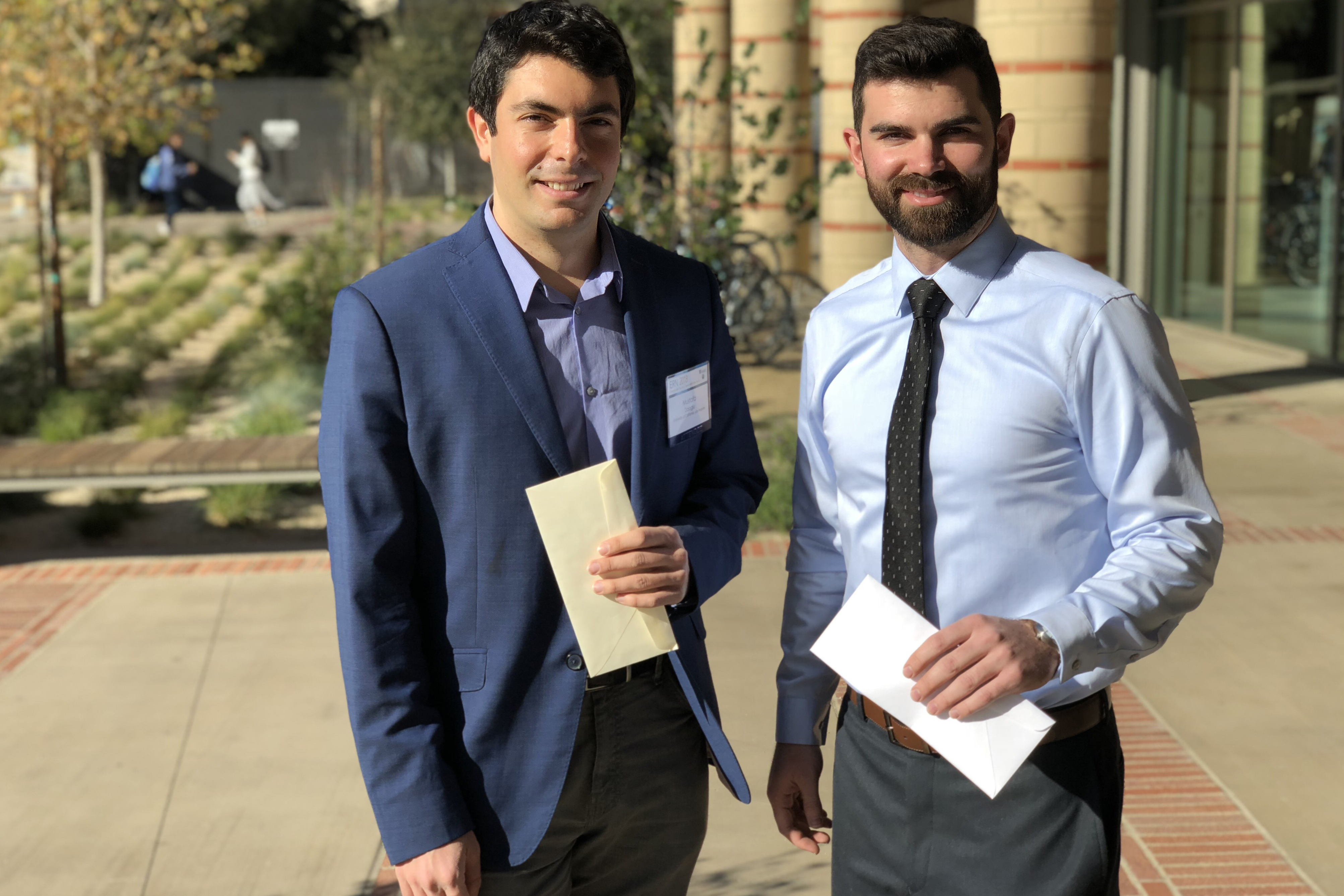UCLA Engineering Graduate Students Win Awards at a STEM conference organized by NSF and AAAS

Mustafa Daloglu and Calvin Brown, two Electrical & Computer Engineering PhD students in Professor Aydogan Ozcan’s group, have earned the first and third place awards, respectively, for their oral presentations in the Technology and Engineering category of the Emerging Researchers Conference in Science, Technology, Engineering and Mathematics (STEM) in Washington, DC. Jointly organized by the American Association for the Advancement of Science (AAAS) and the National Science Foundation (NSF), this annual conference targets undergraduate and graduate students participating in programs funded by NSF. Through poster and oral presentations, workshops and plenary sessions, both undergraduate and graduate students had the opportunity to network with other researchers and enhance their science communication skills. UCLA presentations were awarded based on the quality of their research output and presentation content and delivery, evaluated by a committee of judges. “We are extremely proud of Mustafa and Calvin, and how they have successfully represented our school’s excellent research and training programs, winning these prestigious awards” said Ozcan, Chancellor’s Professor of Electrical & Computer Engineering and Bioengineering Departments.
Recently highlighted in the journal Light: Science & Applications, Mustafa presented at this conference part of his PhD work on a computational microscope that is capable of providing the clearest view of sperm’s 3D motion. Made of inexpensive components which include an image sensor chip and two light-emitting diodes, the technology allows for accurately tracking of sperm locomotion with complete 3D information, which includes the sperm head movement and its spin along with the 3D flagellar beating patterns. Such detailed 3D information could allow researchers to better investigate the true spatio-temporal kinematics of sperm swimming.
Calvin’s presentation focused on his recent work at Ozcan Lab on a handheld smartphone reader for medical diagnostic tests. By leveraging a compact and cost-effective optical design employing optical fibers, a smartphone and custom app to capture images and visualize results, this mobile-phone based system can perform medical diagnostic readings in less than 1 minute without the need for bulky and costly equipment. These advantages demonstrate the potential of the system to find applications in resource-limited settings, for instance, where antimicrobial resistance is expected to grow the most rapidly. This work was published in the American Chemical Society’s journal ACS Nano and Nature Publishing Group’s journal Scientific Reports.
